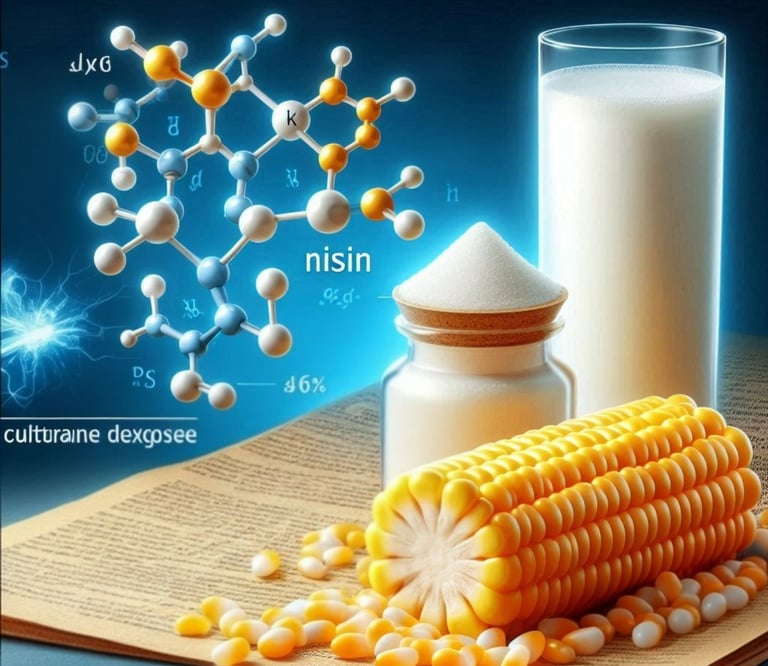
Nisin vs Cultured Dextrose
Cultured dextrose may be a better and more label friendly natural preservative than the controversial nisin in dairy products, alcohol beverages, salad dressing and many other food products.
3/12/20251 min read


Nisin vs Cultured Dextrose
Preservatives are essential for food safety, but consumers increasingly prefer clean-label options. Nisin, a peptides antibiotic used as a preservative in dairy, alcohol beverages, salad dressing, and many other processed foods, faces controversy over safety, antibiotic resistance, and consumer perception.
Though FDA-approved, nisin’s long-term effects as an antibiotic and potential for bacterial resistance raise concerns, and it may unintentionally impact beneficial gut bacteria. The effectiveness of nisin is often affected by pH, temperature, food composition, and food microbiota. In addition, nisin sounds synthetic and majority of nisin products made from animal resources, making it less appealing for clean-label products.
A better alternative is cultured dextrose, a natural antimicrobial derived from wild fermentation, especially when using plant-based dextrose (https://www.sunsonbiotech.com/cultured-dextrosewheat). Naturally fermented from dextrose, it aligns with clean-label trends and is more recognizable. It is broad-spectrum antimicrobial – effective against many bacteria and almost all molds, unlike nisin, which mainly targets Gram-positive bacteria. It is stable under high temperature and not affected by other environmental factors except pH. in fact, cultured dextrose is more stable than popular artificial preservative sorbate.
While nisin remains controversial, cultured dextrose is a safer, more natural, and consumer-preferred alternative, making it ideal for clean-label food preservation and "better-for-you" product formulation.

